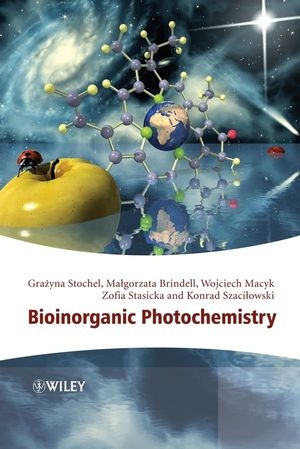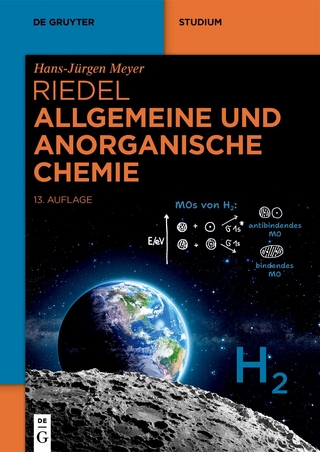
Bioinorganic Photochemistry
Wiley-Blackwell (Verlag)
978-1-4051-6172-5 (ISBN)
- Titel z.Zt. nicht lieferbar
- Versandkostenfrei innerhalb Deutschlands
- Auch auf Rechnung
- Verfügbarkeit in der Filiale vor Ort prüfen
- Artikel merken
Bioinorganic photochemistry is a rapidly evolving field integrating inorganic photochemistry with biological, medical and environmental sciences. The interactions of light with inorganic species in natural systems, and the applications in artificial systems of medical or environmental importance, form the basis of this challenging inter-disciplinary research area. Bioinorganic Photochemistry provides a comprehensive overview of the concepts and reactions fundamental to the field, illustrating important applications in biological, medical and environmental sciences.
Topics covered include:
Cosmic and environmental photochemistry
Photochemistry of biologically relevant nanoassemblies
Molecular aspects of photosynthesis
Photoinduced electron transfer in biosystems
Modern therapeutic strategies in photomedicine
The book concludes with an outlook for the future of environmental protection, discussing emerging techniques in the field of pollution abatement, and the potential for bioinorganic photochemistry as a pathway to developing cheap, environmentally friendly sources of energy.
Written as an authoritative guide for researchers involved in the development of bioinorganic photochemical processes, Bioinorganic Photochemistry is also accessible to scientists new to the field, and will be a key reference source for advanced courses in inorganic, and bioinorganic chemistry.
Dr Grazyna Stochel, Deputy Dean, Faculty of Chemistry, Jagiellonian University, Cracow, Poland
Part I. Introduction 1. Philosophy of bioinorganic photochemistry Part II. Fundamentals
2. Light and matter
2.1. Nature of light
2.2. Accessible light sources
2.3. Interaction between light and matter
3. Formation and properties of electronic excited states
3.1. Wave mechanics and quantum numbers
3.2. Electronic excitation
4. Photophysical deactivation of electronic excited states
4.1. Spontaneous deactivation
4.2. Quenching
4.3. Coordination and organometallic compounds
5. Kinetics of the excited-state decay
6. Photochemical reactions
6.1.Photochemical reaction channels
6.2. Intramolecular photoreactions
6.3. Intermolecular photoreactions
6.4. The coordination compound specificity
6.5. Photosensitization
6.6. Homogeneous photocatalysis
7. Photochemistry and photophysics of supramolecular systems and nanoassemblies
7.1. From molecules through clusters to crystals
7.2. Metallic nanoparticles: metals in the embryonic state
7.3. Formation and decay of the excited states of semiconductors
Part III. Natural photoprocesses involving inorganic compounds
8. From interstellar space to planetary atmospheres
8.1. Homogeneous systems: From interstellar space to planetary atmospheres and primitive soup models
8.2. Heterogeneous photochemistry in ice phases
9. Solar radiation and terrestrial environment
9.1. Solar radiation
9.2. Atmospheric photochemistry
9.3. Photochemistry in hydrosphere and lithosphere
9.4. Photochemical self-cleaning in the environment
10. Heretogeneous (photo)catalysis and biogenesis on Earth
10.1. (Photo)catalysis on chalcogenide semiconductors
10.2. Photocatalytic nitrogen fixation
10.3. Photocatalytic carbon dioxide fixation
10.4. „Fossils” of prebiotic catalysts: metal clusters in active centres of metalloenzymes
11. Foundation and evolution of photosynthesis
11.1. Photosynthetic structures
11.2. Oxygenic photosynthesis
11.3. Light harvesting antennas (LHC)
11.4. Electron transfer pathways in PSII and PSI
11.5. Oxygen evolving complex, OEC
Part IV. Photochemistry and photophysics in bioinspired systems. Studies and modeling
12. Photoenzymes
12.1. Natural photoenzymes
12.2. Modified natural proteins/enzymes
12.3. Artificial photoenzymes
12.4. Towards mimicking the photosynthetic processes
13. Photoinduced electron transfer in proteins
13.1. Photochemical methodology
13.2. Biochemical applications
14. Nucleic acids photocleavage and charge transport
14.1. Mechanisms and strategies for advanced metallophotocleavers
14.2. Photoinduced DNA-mediated charge transport
Part V. Towards applications
15. Light and biomatter (molecules, cells and tissues)
16. Fluorescent and chromogenic sensing and labeling
16.1. Cations as targets in biochemical sensing
16.2. Fluorescent and chromogenic sensing of anions
16.3. Optical detection of neutral molecules
16.4. Nanoparticles in biochemical sensing and labeling
17. Therapeutic strategies
17.1. Photobiostimulation
17.2. Photoactivation of drugs
17.3. Photodynamic therapy
17.4. Nanomedicine methods
18. Photodynamic inactivation
19. Photodelivery and phototargeting
20. Phototoxicity and photoprotection
20.1. Chemical and physical photoprotection
20.2. Inorganic sunscreens
21. Photocatalysis in the environmental protection
21.1. Development of homo- and heterogeneous methods
21.2. Homogeneous photocatalysis
21.2. Heterogeneous systems
21.3.New ideas in pollution abatement
| Erscheint lt. Verlag | 9.4.2009 |
|---|---|
| Verlagsort | Hoboken |
| Sprache | englisch |
| Maße | 176 x 252 mm |
| Gewicht | 1007 g |
| Themenwelt | Naturwissenschaften ► Chemie ► Anorganische Chemie |
| Naturwissenschaften ► Chemie ► Physikalische Chemie | |
| ISBN-10 | 1-4051-6172-8 / 1405161728 |
| ISBN-13 | 978-1-4051-6172-5 / 9781405161725 |
| Zustand | Neuware |
| Haben Sie eine Frage zum Produkt? |
aus dem Bereich


